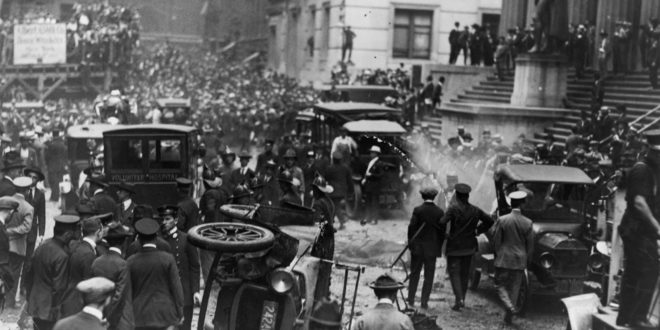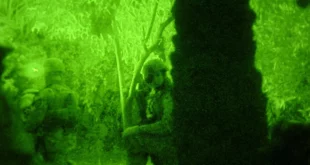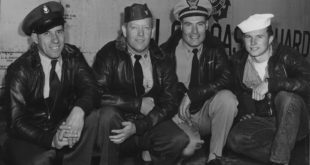How the Galleanists operated holds lessons for today as we continue to deal with the endless threat of terrorism.
by Jeffrey D. Simon
Though largely forgotten today, one of the most creative and destructive terrorist groups in the United States was the Galleanists, a fiery band of Italian anarchists active during the early 1900s. Luigi Galleani, a gifted writer and charismatic speaker, tapped into widespread disappointment among Italian immigrants concerning their lives in America. Unemployment, low wages, long working hours, discrimination, and a poor quality of life made many Italian immigrants receptive to his words. He called for the destruction of existing political, economic, and religious institutions. In 1905 he published a bomb manual, much like al-Qaeda and ISIS have done in their online magazines in recent years.
The Galleanists introduced terrorist tactics and strategies that are still used today: they were the first group to send dozens of package bombs across the country and to set off near-simultaneous bombings in seven different cities. One of their members is also suspected of launching the first vehicle bomb in the United States in 1920, considered the worst act of domestic terrorism until the 1995 Oklahoma City bombing. How the Galleanists operated holds lessons for today as we continue to deal with the endless threat of terrorism.
Lesson Number 1: Innovative and Creative Terrorist Attacks Can Catch Governments by Surprise
Counterterrorism and security planning has often been a reactive process. There is a tendency to think about terrorism from the perspective of what happened in the past rather than thinking “outside the box” as to what may occur in the future. When terrorists depart significantly from previous operations, they can catch the authorities by surprise. Al-Qaeda demonstrated this on September 11, 2001, by combining the tactics of hijacking and suicide attacks, thus becoming the first group in history to launch a suicide attack from the air in hijacked passenger planes. It was a terrorist operation that the United States was not ready for.
Similarly, the U.S. government in 1919 did not anticipate that terrorists would send 30 sophisticated homemade bombs disguised as gifts to a number of high-profile targets, including members of President Woodrow Wilson’s administration, federal law enforcement officials, members of Congress, judges, mayors, governors, local police officials, and prominent businessmen. But that is what the Galleanists did in late April, using a famous New York department store, Gimbel Brothers, as the return address with the words novelty and sample stamped on the package. The “gift” was a cylinder which when opened would set off an explosive charge packed with metal slugs.
Nobody was killed and several packages were held up at the New York Post Office due to insufficient postage. But the Galleanists had introduced a new terrorist tactic, taking advantage of thinking up something nobody had anticipated. No security measures were in place to prevent that type of terrorist strike.
READ MORE: Lone Wolf Terrorists and Soft Targets: Predicting the Next Wave of Attacks
The same was true a little more than a month later when, instead of repeating the package bomb plot, the Galleanists decided to place the bombs outside the homes of their targets. During the late evening of June 2 they set off nine time bombs in seven cities within a two-hour time span.
The most astonishing aspect of this operation was the lack of security at the home of the attorney general of the United States, A. Mitchel Palmer, who had been a target of one of the earlier package bombs. A Galleanist was able to simply walk up the steps of Palmer’s home in Washington, D.C., and attempt to place the bomb in front of his house. The bomb, however, went off prematurely, killing the terrorist. Palmer, who was inside the house with his wife, was not injured, although the house was damaged.
READ MORE about terrorist activity overseas
The last operation of the Galleanists was the most spectacular of all and once again demonstrated the group’s innovation and creativity. Mario Buda, a Galleanist, is suspected of being the perpetrator of the September 16,1920, Wall Street bombing that killed 38 people and injured hundreds of others. Buda drove a horse and wagon right into the heart of Wall Street and then left the scene. The abandoned vehicle with a hidden bomb was parked outside the J.P. Morgan bank building for some time. One witness stated he saw the unattended wagon from his office window for at least one hour. Yet nobody became suspicious for there had never before been a vehicle bombing in the United States. Thinking up new ways to commit violence was a trademark of the Galleanists and continues to be a characteristic of terrorists everywhere.
Lesson Number 2: Extremist Groups Can Remain Dangerous Even After Their Leaders Are Eliminated
The Galleanists demonstrated that eliminating the leader of a terrorist organization does not guarantee an end to the violence. During the spring of 1919, while Galleani was awaiting deportation and being closely watched by the authorities, the group was still able to plan and commit major terrorist attacks. These included the package bomb plot of late April and the near-simultaneous bombings in seven cities on June 2. Then, more than a year later, Buda was able to commit the Wall Street bombing without guidance or instructions from Galleani who was by that time living in Italy.
Galleani had built a decentralized organization that did not need his leadership to plan and implement attacks. The decentralized model of extremism that Galleani built for his followers can be seen today in many terrorist organizations, including al-Qaeda and the Islamic State of Iraq and Syria (ISIS). Both started out with a central command, with al-Qaeda in Afghanistan and ISIS in Iraq and Syria. But they morphed into global, decentralized groups: al-Qaeda after the U.S. invasion of Afghanistan following the 9/11 attacks and ISIS after it was defeated on the ground in Iraq and Syria by U.S.-led coalition forces from 2017 to 2019.
The killings of al-Qaeda’s leader Osama bin Laden in 2011 and ISIS leader Abu Bakr al-Baghdadi in 2019 have not diminished the terrorist threats posed by both groups. They’ve continued to perpetrate attacks in many countries. Neither group needs a central command or specific leader to direct their operations, just as the Galleanists did not need Galleani to launch their attacks.
Lesson Number 3: Lulls in Terrorist Attacks Can Be Misleading
Throughout the history of terrorism, there have been periods when the public and government in a particular country thought the worst was over because a certain amount of time had passed since the last major incident. This occurred in the United States in the late 1980s and early 1990s, when, after decades of terrorist attacks against U.S. targets overseas, things seemed to be getting better. Those years brought the end of the Cold War and the return of American hostages from Lebanon. Even the Persian Gulf War in Iraq, with threats of Saddam Hussein-inspired retaliatory terrorist attacks against the United States, did not shatter the belief that a corner had been turned in the battle against terrorism. But then a car bombing at the World Trade Center in New York in February 1993 killed six people and injured a thousand others, mostly due to smoke inhalation.
When there were no more major terrorist attacks on U.S. soil for a couple of years, people once again breathed a sigh of relief. But in April 1995 a homegrown terrorist, Timothy McVeigh (working with another homegrown terrorist, Terry Nichols), set off a truck bomb at the federal building in Oklahoma City in April 1995, killing 168 people. There was then another lull before the next major terrorist event in the United States: the 9/11 attacks.
The Wall Street bombing in September 1920 also followed a lull in terrorist attacks. More than a year had passed since the Galleanists struck with the June 2, 1919, bombings in several cities. The lack of additional major attacks since that date by any group, combined with the Palmer Raids (a roundup of alien radicals throughout the country) and the mass deportations that followed, likely created a false sense of security among the public and authorities regarding the possibility of future incidents.
Terrorists, however, always have the advantage of having to perpetrate just one major attack to put terrorism back at the forefront of public consciousness and reverse all perceptions of progress in the battle against terrorism. That is why governments should never be fooled into thinking they are winning a “war” against terrorists when terrorism can involve just one person, like Mario Buda, with a bomb and a cause.
The Wall Street bombing also illustrated what the Irish Republican Army would state many decades later. After a failed attempt to assassinate British prime minister Margaret Thatcher in 1984, the IRA stated, “Today we were unlucky, but remember, we only have to be lucky once. You will have to be lucky always.”
America was not lucky on September 16, 1920, due in part perhaps to overconfidence by government officials and security personnel that the threat of terrorism had ended.
Lesson Number 4: There Isn’t Always Closure to a Terrorist Attack
Living with uncertainty can be frustrating and upsetting – a breakup without knowing why it happened, the death of a loved one without getting the chance to talk about unresolved issues, doubts about a decision one made. A lack of closure can prevent people from moving on with their lives.
For survivors of a terrorist attack, there may never be closure. The psychological and physical scars can last for the rest of their lives. Closure may also be elusive for the families of those killed by terrorists. An important aspect of coming to grips with the loss of a loved one in such a way is at least knowing who carried out the attack and why they did it. Family members and friends of those who lost their lives in the Wall Street bombing, as well as the surviving victims, never obtained that finality. The bombing was never solved, even though Mario Buda is believed to have been the perpetrator. But this was never officially acknowledged.
Several other unsolved terrorist attacks have claimed many lives since the 1920 Wall Street explosion, including, among others, the 1975 bombing in the baggage-claim section of LaGuardia Airport in New York that killed 11 people and wounded 75 others and the 1982 Tylenol poisonings in the Chicago area, where seven people died after taking cyanide-laced Tylenol capsules.
Even when the perpetrator of an attack is known, a motive may never be uncovered. Stephen Paddock killed 58 people and injured nearly 700 others at an outdoor country music festival in Las Vegas on October 1, 2017. Despite more than a year of investigation by the FBI, it was not determined why Paddock, who killed himself before he could be arrested, committed the worst mass shooting in U.S. history. Living with that uncertainty will remain an extra burden for those who have already suffered because of the tragedy.
Lesson Number 5: The Importance of Revenge in Explaining Terrorist Attacks
Although there are many different motivations for a terrorist attack (including the desire to create fear in a society, disrupt peace processes, gain publicity for a cause and recruit new members, create repressive measures by the target government in response and turn parts of the public against the government, and so forth), it is revenge that appears to be the most prominent.
Revenge helps to explain why terrorism is an endless conflict. There will always be a group or individual that believes that the group or individual was wronged by another group, individual, or government, or by a situation or incident that occurred, and views terrorism as the best way to respond. When terrorism is part of ethnic-nationalist or religious conflicts, the hatreds that exist between different groups can be handed down from generation to generation, creating endless cycles of attacks and reprisals.
For the Galleanists, terrorism was used mainly as a tool for revenge. Luigi Galleani provided his followers with instructions for how to make a dynamite bomb, cleverly disguising the contents of his 1905 manual with a misleading title, La Salute è in Voi!(Health is in you!).
The Galleanists, however, did not start their terrorism campaign until 1914, and the precipitating cause was revenge for the Ludlow Massacre, in which 11 children and two women burned to death during a strike at a Colorado mining company owned by John D. Rockefeller Jr. Galleani’s newspaper, Cronaca Sovversiva (Subversive Chronicle), labeled Rockefeller the “tormentor billionaire.”
A New York faction of the Galleanists, Gruppo Gaetano Bresci, also known as the Bresci Group, worked with other anarchists to bomb the Rockefeller estate in Tarrytown, New York, but their device exploded on July 4, 1914, as it was being prepared in a New York City apartment. Three anarchists were killed. A series of bombings and bomb plots targeting churches and courthouses in New York followed throughout the rest of the year and part of the next. Police suspected the Galleanist faction of involvement.
Revenge was also the motivating factor in three more of the Galleanist terrorist attacks. The April 1919 letter-bomb plot and the June 1919 bombings were perpetrated in retaliation for the impending deportation of Galleani and the government shutting down of Cronaca Sovversiva. Leaflets distributed in February throughout New England by the Galleanists warned of what would happen if Galleani and members of the group were deported: “You have shown no pity to us! We will do likewise. And deport us! We will dynamite you! [Emphasis in the original].”
Leaflets were then found at each of the bomb sites on June 2, stating, “There will have to be bloodshed; we will not dodge; there will have to be murder; we will kill because it is necessary; there will have to be destruction; we will destroy to rid the world of your tyrannical institutions.” Leaflets were also found in a public mailbox in Wall Street on the day of the vehicle bombing, warning of more attacks: “Remember we will not tolerate any longer. Free the political prisoners or it will be sure death for all of you.” Two Galleanists, Nicola Sacco and Bartolomeo Vanzetti, who were close friends of Mario Buda, had recently been indicted for murder.
The Galleanists illustrated years ago how powerful a motivating factor revenge can be when launching a terror campaign. Since there is no expiration date on revenge – it can be taken years or even centuries after a precipitating event – it will remain a major reason why terrorists perpetrate violence around the world.
This article first appeared on HSToday. The article is drawn from Jeffrey D. Simon, America’s Forgotten Terrorists: The Rise and Fall of the Galleanists.
 Soldier of Fortune Magazine The Journal of Professional Adventurers
Soldier of Fortune Magazine The Journal of Professional Adventurers






